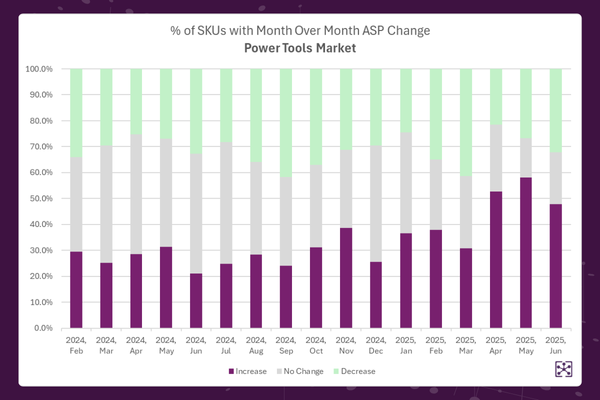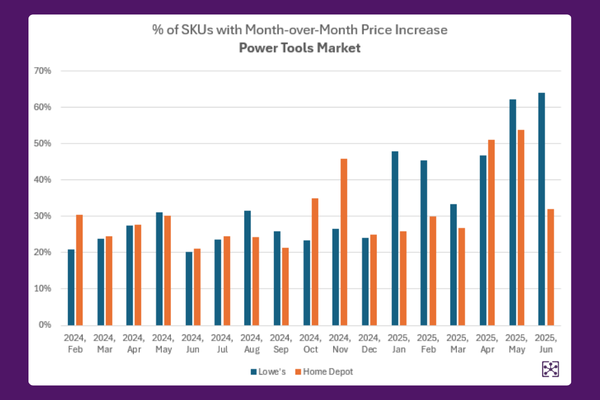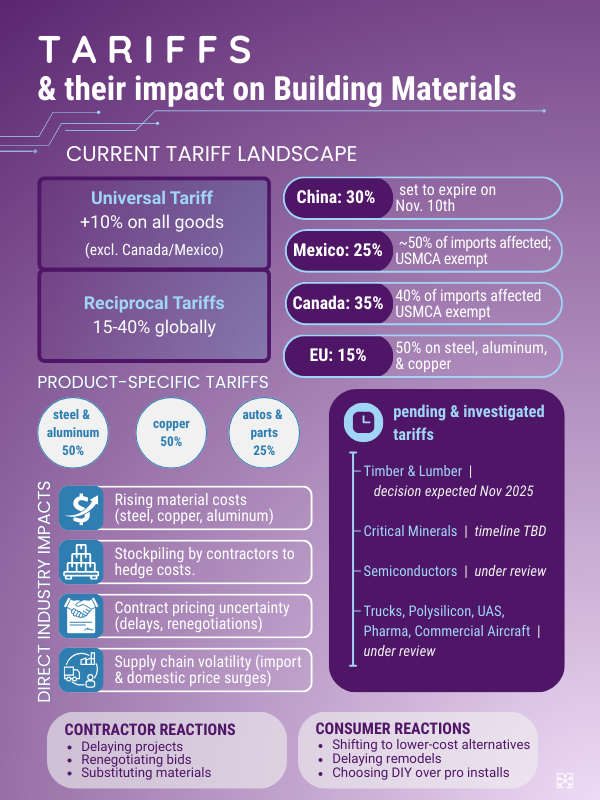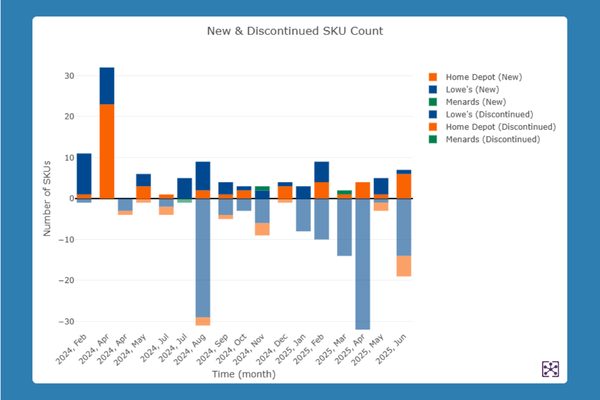
Tariffs at the Toolbench: Trade Pressures in Building Materials
Sep 23, 2025
A Shifting Economic Backdrop
The U.S. building materials and home improvement industries are facing disruption unlike anything seen in decades. The average effective U.S. tariff rate has climbed to 18.6% in 2025 — the highest since 1933. The result: suppliers, distributors, and retailers are facing higher costs, strained supply chains, and shifting market behavior.
For households, the effects are immediate. According to Yale’s Budget Lab, tariffs are expected to cost the average family about $2,200 this year while shrinking the U.S. economy by roughly 0.4% annually, or $125 billion. (The Budget Lab) Ernie Tedeschi, Director of Economics at Yale’s Budget Lab, has noted that while tariffs were originally intended to reduce trade deficits, the only durable way that might occur is by slowing U.S. economic growth and investment. (Bloomberg) Yet not all sectors are suffering equally: while construction and agriculture are contracting, U.S. manufacturing output is projected to rise 2.1% overall, with non-advanced durable goods — including many building materials — up nearly 4%.(The Budget Lab).
Tariffs on the Ground: Real Impacts on Materials and Retail
Beneath the macro trends, the ripple effects of tariffs are visible in the products and categories that keep projects moving. Lumber, where 85% of U.S. softwood imports come from Canada, is particularly vulnerable. New tariff hikes could add $7,500 – $10,000 to the cost of a single-family home. (FinMKT) Meanwhile, steel and aluminum – based products are absorbing 10 – 25% cost increases, and adhesives and paints, which are reliant on imported chemical inputs are showing rising volatility. (S&P Global Market Intelligence)(BHG)
A recent SKU-level analysis shows 63% of power tool SKUs increased in price between April and May 2025, nearly double the share from the same period last year. At the retailer level, 58% of Home Depot’s power tool SKUs saw increases, compared with nearly 70% at Lowe’s. Despite this, more than half still posted year-over-year sales growth — a sign that pricing power in certain categories remains strong.

Chart 1: Monthly price increases across power tool SKUs (Jan. 2024-June 2025)

Chart 2: SKU price increases at Home Depot vs. Lowe’s.
How the Market Is Adapting
Retailers are delicately walking a tightrope between rising costs and product pricing. Home Depot originally committed to avoiding broad price hikes, instead using targeted adjustments and product substitutions. After a weak Q2, their strategy has shifted to include “modest price movement in some categories.” (CNN) Lowe’s has been less definitive, signaling that some tariffs will inevitably have to flow through to consumers.
Major suppliers have also implemented price increases, adding further pressure downstream.(NPR) Consumers are adapting too: surveys show 50% of homeowners plan to buy less often, 40% are turning to lower-priced brands, and half are considering secondhand or locally sourced alternatives.(BHG)
Contractors, caught between suppliers and consumers, are navigating as best they can. Many are experimenting with materials like engineered wood and U.S.-sourced composites as a means to avoid pricing hikes and supply chain delays. Recent research from the Home Improvement Research Institute underscores this uncertainty: more than a third of contractors (36%) now cite tariffs as the most disruptive external risk they face in 2025, outpacing even interest rates and immigration policy.

Quick Takeaways for Teams
- Tariffs are reshaping the economy. U.S. tariffs now average 18.6% which is the highest since 1933. GDP fell 0.5% in Q1, rebounded 3.3% in Q2, and is forecast to slow to ~1% in Q3. Manufacturing remains up +2.1% in 2025.
- Material costs are still spiking. Lumber tariffs alone could add up to $10K to a new home, while steel, aluminum, and copper face 10 – 25% increases.
- Hidden SKU-level patterns. 63% of power tool SKUs rose in price this spring, nearly double last year’s pace, yet more than half still posted sales growth.
- Contractors flag tariffs as top risk: 36% rank tariffs as their most disruptive external factor in 2025.
Why Data Matters More Than Ever
The macro headlines on rising inflation, higher project costs, and a slowing housing market,(FinMKT) only tell part of the story. The real advantage comes from seeing how tariffs affect categories, SKUs, and retail partners at a regional and retailer level. SKU-level intelligence tracking hundreds of millions of inventory records daily helps identify where tariffs are reshaping assortments, exposing cost vulnerabilities, and influencing pricing power.
This level of clarity helps manufacturers, distributors, and retailers make informed, proactive moves — from adjusting pricing models, to planning for stock fluctuations and reshaping assortments in categories like roofing, adhesives, and power tools.

What’s Next: From Insight to Action
The coming year will be pivotal. With the future of tariffs under investigative scrutiny and political uncertainty on the horizon, building materials teams must prepare to navigate continued price pressures and sourcing challenges. As cautioned in Bloomberg, tariffs are unlikely to meaningfully reduce trade deficits except through slower growth and investment. This raises the stakes for companies in the manufacturing sector. Those relying on outdated quarterly surveys risk being caught flat-footed, while those with timely, SKU-level intelligence will be better prepared to manage risk and identify opportunities for growth.
Join Our Webinar
This blog is a preview of the trends Datavations is tracking around tariff changes. On October 6th, 2025, join HIRI’s hosted webinar to hear from Datavations, HIRI’s Strategic Parter:
- Break down the policy drivers behind 2025 tariffs.
- Reveal SKU-level insights into the categories and retailers most affected.
- Share strategies to help manufacturers, distributors, and retailers prepare for 2026.
Register now for the webinar to secure your spot.
Contact us to talk about becoming one of HIRI's Strategic Partners.
